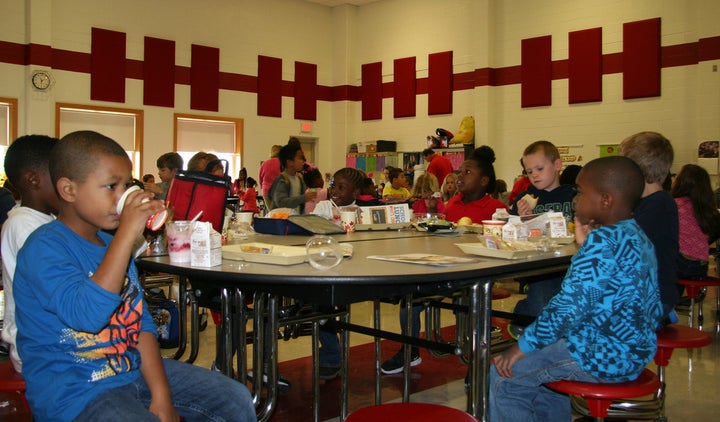
Remember when kids had a lunch hour? I do. Back in the 1980s, my children had enough time to walk home for lunch and go back to school to run around on the playground. Now their kids have 20 minutes for lunch, which includes the time it takes to march them into the lunchroom, get their food, and exit for the next grade. So actually, more like 10 minutes to gobble down that lunch.
For children who are slow eaters, this is a nightmare scenario. Many of the children who bring their own lunches end up eating most of the food after school lets out. Others who eat school lunch end up throwing out a lot of food they don’t have enough time to eat.
Children are rushed through lunch by lunch supervisors who often yell at them to stop talking, clean up their space, and hurry to go out for recess. If they don’t get snack time in the afternoon, which is usually true once they are past second grade, they are trying to learn while hungry. That’s not only unproductive, it’s really sad. Eating lunch at school these days can be a pretty bleak experience for many children
On a Facebook page for my local school district, one parent shared that she was having her pre-kindergarten child practice eating his lunch at home in under 20 minutes so he will be ready for the demands of school. There is something very wrong with having to train a four-year-old to gobble down his food as part of being ready for kindergarten.
Then there is the issue of lunch shaming. In case you didn’t know about this child-friendly policy, kids whose lunch accounts are not up to date receive a humiliating brown bag lunch of a cheese sandwich, or sometimes no lunch at all. Punishing children for their parents’ mistake or inability to keep enough money in the lunch account seems like a heartless way of dealing with this problem.
Why are children subjected to these lunch policies? According to school administrators, most schools have lunchrooms that only accommodate one grade at a time. In a K-5 school, that means two hours devoted to pushing the kids into and out of the lunchroom in short shifts. Kind of like a lunch factory.
To allot more time, the school day would have to be longer so children receive the mandated number of instructional minutes each day. Making the school day longer would violate the teachers’ contracts. Eating lunch in the classroom with their teachers also violates teachers’ contracts and makes it impossible for educators to have a break to eat their own lunch, use the bathroom, or plan curriculum.
All of the above reasons for the short and rushed lunch make sense – to adults. For the children, it is the equivalent of adults going to a restaurant, waiting for their table, and being told they must vacate that table within 15 minutes of receiving their food because another party is there to take their table. And no talking, please, as it slows down eating and makes the restaurant noisy.
Perhaps the way we push kids through lunch reflects what has become our approach to food and family dining in general. My friend has grandchildren living in Singapore who are served beautifully cooked meals on real plates with ample time to eat. But in America, our culture’s approach to food is quite different. Families rarely eat together. We value speed and convenience over nutrition and leisurely dining. So perhaps pushing kids through a school lunch factory is consistent with our values surrounding both eating and child rearing these days.
The food waste attributed to kids not liking nutritious lunches justifies the rollback by current agriculture secretary Sonny Purdue of Michelle Obama’s efforts to make school lunches healthier. Perhaps there is another reason for all of the wasted food: the children simply do not have enough time to eat it.
Because we expect kids to learn at school, maybe we should rethink what we our lunch policies are teaching them about eating and the importance of time to socialize with their peers. Here’s a bit of summer homework for school administrators: Find a way to manage school lunches with compassion and sensitivity to the needs of children.
I invite you to join my Facebook community, sign up for my newsletter, visit my website, and check out my book.
